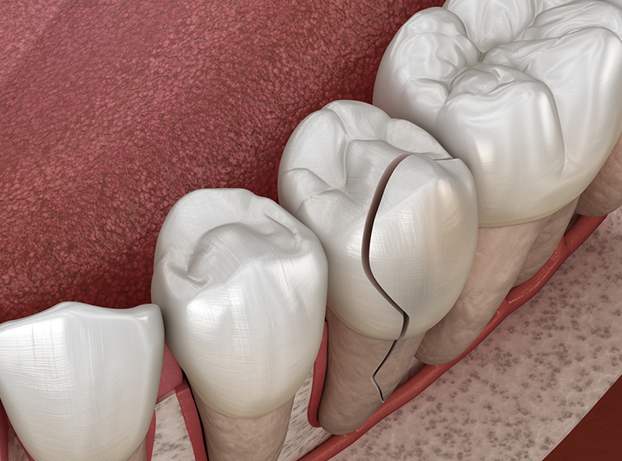Can a Cracked Tooth be Saved with a Root Canal

Can a cracked tooth be saved with a root canal and crown?
Cracked Tooth Symptoms
There are five types of cracked teeth: craze lines, fractured cusps, cracks extending into the gum line, split teeth, and vertical root fractures. Each type of cracked tooth presents different symptoms. Craze lines are small, painless cracks in the enamel that usually do not require treatment. Fractured cusps typically occur near dental fillings and do not usually cause pain. Teeth with cracks reaching the gum line may need to be extracted, but they could still be saved if the crack has not reached that point yet.
Split teeth have cracks that go from the surface to below the gum line and can be split into multiple segments. These teeth are usually unable to be saved as a whole. Vertical root fractures start below the gum line and extend upwards. Patients with cracked teeth may experience pain when chewing or biting, tooth sensitivity, gum swelling around the affected tooth, and intermittent pain.
“With all types of cracked teeth, patients may experience pain when chewing or biting, tooth sensitivity, swelling of the gum around the affected tooth, and intermittent pain.”
Syndrome of a Cracked Tooth (SCT)
Cracked tooth syndrome, also known as CTS, is a condition where a patient has a crack in their tooth that is too small to be seen on an X-ray or difficult to locate under the gum. This condition commonly affects molars and can cause tooth sensitivity, pain, or discomfort when biting down. Unlike cavity pain, CTS pain comes and goes intermittently.
There is no single cause of CTS, but certain populations may be more at risk. Patients with malocclusions, teeth grinding or clenching habits, large fillings, or previous root canal treatment are more likely to develop CTS. Diagnosing CTS can be challenging, leading to unexplained symptoms for months.
“…as CTS is also one of the most challenging dental problems to diagnose, patients may experience unexplained symptoms for months.”
Root Canals for Cracked Teeth
According to MedicalNewsToday, the best way to treat a cracked tooth depends on where it is located and how extensive the damage is. Minor cracks that do not cause pain may not need treatment, but options like glue, bonding, fillings, or crowns can be used for minor cases. In more severe situations, a root canal may be necessary.
During a root canal, the infected or inflamed pulp is removed by an endodontist. The root canal is then cleaned, shaped, and filled before a crown is placed on the tooth to protect and restore its function. Once the treatment is complete, the tooth will function like any other natural tooth.
“… the best treatment method for a cracked tooth is dependent on its location and the extent of its damage.”
A Cracked Tooth That Cannot Be Repaired
“Early detection is critical for proper and effective treatment, and endodontic surgery may be adequate for more severe cases.”
Post-treatment care for a mended cracked tooth
Fractures in a cracked tooth do not heal like broken bones do. Some cracks may even worsen and lead to total tooth loss if left untreated. While crowns can protect treated teeth, they are not always foolproof. Fortunately, endodontic retreatment is an option if any treated teeth do not heal properly or become reinfected.
Proper care for a repaired cracked tooth is crucial to prevent further pain and spreading of the crack. Some discomfort may be expected after treatment, but can be managed with painkillers. Cedar Grove Dental Group provides patients with post-treatment instructions to ensure the best results.




